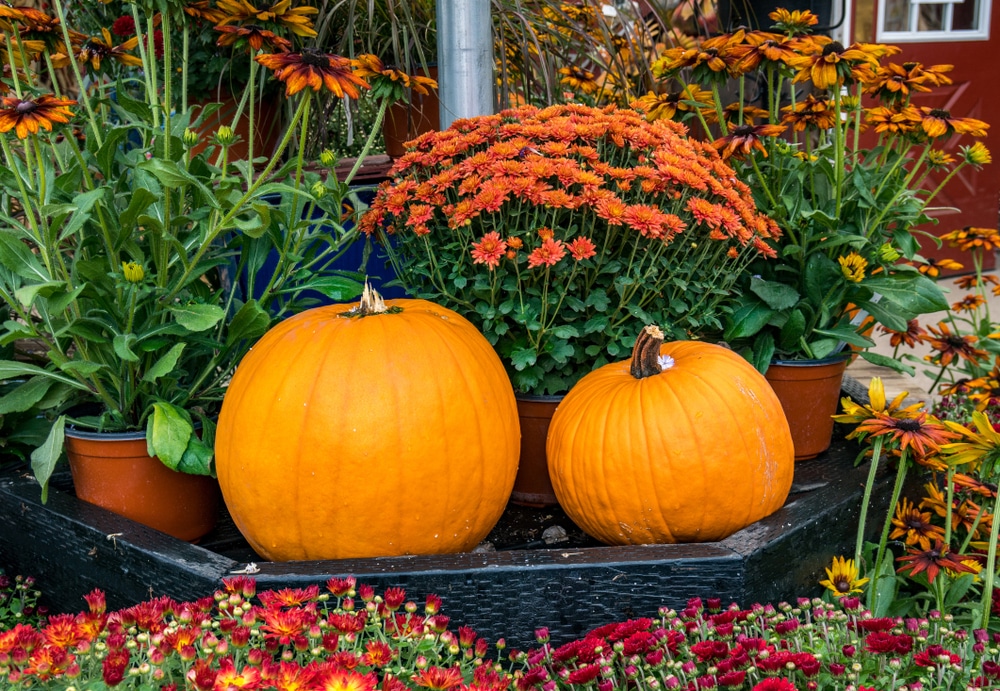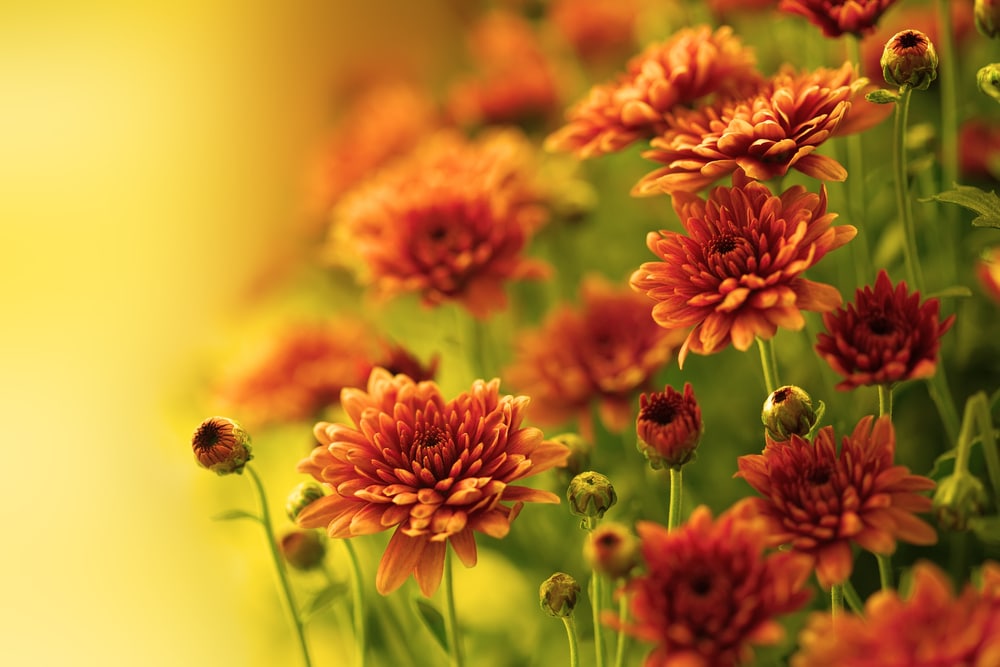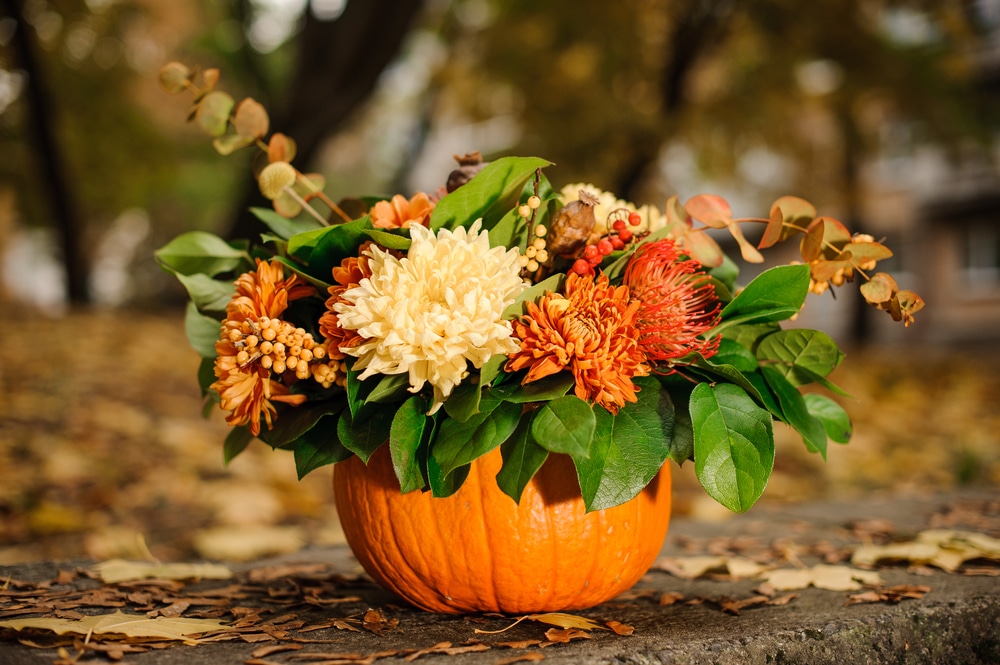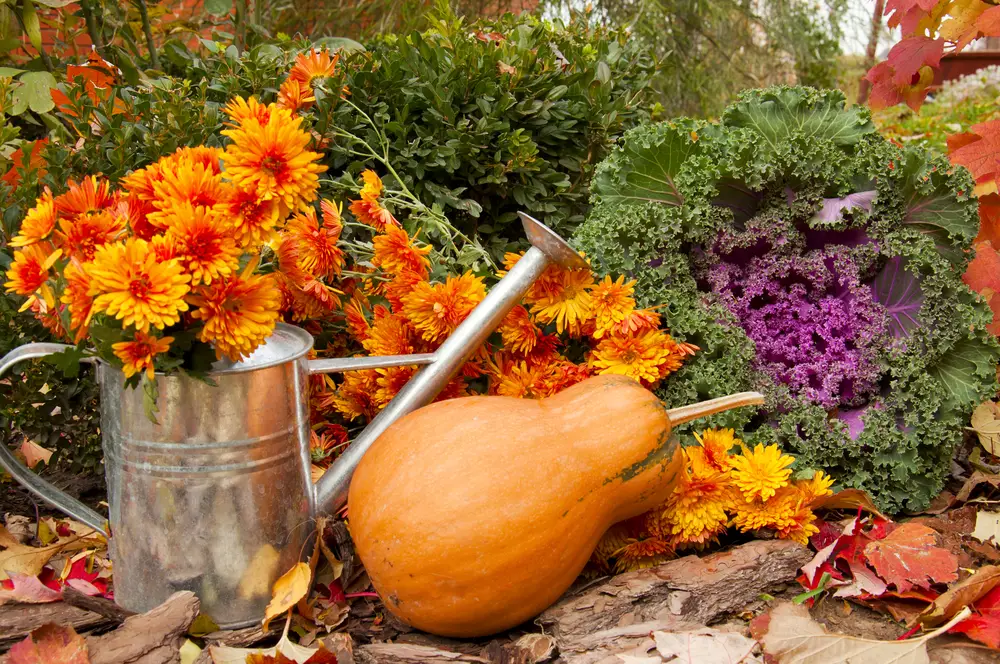A fall garden is an exciting garden type that has lots of benefits for those who create one. However, does that mean a fall garden is worth it?
Is A Fall Garden Worth It?

If you love having a thriving garden for as many months of the year as possible, consider a fall garden. There are a few reasons for this.
Plenty of garden crops and plants flourish in the fall. You’ll get to spend more time outdoors enjoying your garden too.
However, a fall garden does mean continued garden work. So, keep that in mind.
If all of the above works for you, then a fall garden is worth it!
What Are The Best Plants For A Fall Garden (Including Crops)?

You can plant tons of plant varieties in summer, so they’re ready for fall. Moreover, if you want to get a headstart in spring, there are many plants whose seeds and bulbs you can sow at this time of year.
Here’s a list of plants with brightly colored blooms in the fall:
- Chrysanthemums (many consider this to be the ultimate fall flower!)
- Pansies
- Asters
- Marigold (in pots)
- Hydrangeas
- Black-eyed Susan
- Violet
- Red salvia
- Nasturtium
Here are some fruits and vegetables great for a fall garden as well:
Lastly, here are some options to plant in the fall so they’re ready for spring:
- Garlic
- Sweet alyssum
- Snapdragons
- Spring cabbage
- Fall onions (they’ll be ready to harvest in early summer)
- Phlox
- Bee balm
- Lavender
Benefits Of Fall Gardening

Of course, one benefit of fall gardens is their beauty. However, fall gardens offer more benefits than just their look.
Here’s what they are.
Flowers Bloom Sooner In Spring – That’s Great For Pollinators
Planting seeds in the fall allows them to be ready for the following spring, meaning they can bloom early.
Due to climate change, pollinators such as bees are emerging earlier in the year. This means they often have to deal with limited food sources. By getting ready for spring in the fall, your garden helps hungry pollinators ready to start their work for the year.
Many people wait until early spring to start planting, but this isn’t how things happen in nature. When you think about it, flowers go to seed at the end of the growing season, which means these seeds are scattered in the fall.
If you want to replicate nature in your backyard, autumn planting is a fantastic way to do this.
The Weather Is Cooler To Work In
Just the other day, I went out into the garden to do some work and tidy up. It was a hot day, and there were plenty of jobs I needed to do: weeding, mowing, sweeping, and tending to my plants.
By the end, I was a sweaty mess and exhausted, despite only working for around one hour. But that’s what happens when you’re forced to work in extreme temperatures.
However, gardening in the fall is the complete opposite. While the weather is often dry enough to work in the garden, you’re not battling the heat, so it’s much more comfortable.
This reduces the physical stress on your body, which is much healthier for you. You avoid issues like heat exhaustion in the summer, which lands people in the hospital.
While you may need to work in the garden in summer, I’m sure you’ll find it much more enjoyable when the temperature is cooler in the fall.
Fall Gardening Often Means Easier Planning
When you start gardening in spring, you’ll often find the weather unpredictable, which can mess with your plans. But in fall, the weather is generally cool and dry, and there are at least six weeks before the first frost.
This means you can better plan your gardening needs and stick to your schedule.
In addition, you’ll have had the opportunity at the end of summer to assess the needs of your plants. For example, you may have noticed certain plants weren’t in the optimum spots in terms of their light or shade needs.
After learning this, you’ve got a few weeks in the fall to dig them up and transplant them somewhere they’ll thrive next spring.
It’s Easy To Divide And Transplant Perennials
If you have perennial plants in your garden, fall is the ideal time to divide and transplant them.
The reason for this is the soil is still warm and will also contain a good amount of moisture. When you transplant your perennials, these optimal conditions also allow their roots to firmly establish.
You might not see much growth on the surface until spring but rest assured, what’s going on underneath is a hub of activity.
Moreover, when you have healthy root growth in your soil, this means more nutrients to help your plants to grow bigger and stronger. It’s a truly beneficial cycle.
Get A Headstart On Tidying Up
I have made the mistake several times in the past of not tidying my garden before winter. By spring, I’m left with more work than I know how to handle. This is another reason gardening in fall is hugely beneficial.
You’ll get a headstart on jobs, including laying new lawn turf (fall is the best time to do this, as the soil is soft and moist, which helps establish roots.)
I also think it’s a great idea to clear some of your garden clutter and remove any plants that aren’t going to make it through the winter.
At the end of fall, take the opportunity to clear any paths of leaves and other debris that may be a slip hazard over winter. You can also tidy up borders and scarify your lawn so it’s aerated and well-drained throughout the winter.

